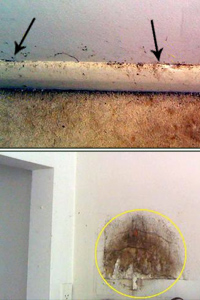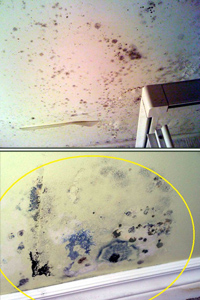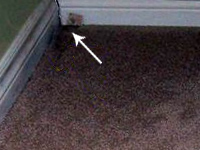Indoor Air Quality Assessments
What Causes Indoor Air Problems?
Indoor pollution sources that release gases or particles into the air are the primary cause of indoor air quality problems in homes. Inadequate ventilation can increase indoor pollutant levels by not bringing in enough outdoor air to dilute emissions from indoor sources and by not carrying indoor air pollutants out of the home. High temperature and humidity levels can also increase concentrations of some pollutants.
Pollutant Sources

Main sources of indoor air pollution in any home:
- combustion sources (oil, gas, kerosene, coal, wood, and tobacco products);
- building materials and furnishings as diverse as deteriorated;
- asbestos-containing insulation;
- wet or damp carpet, cabinetry or furniture made of certain pressed wood products;
- products for household cleaning and maintenance, personal care, or hobbies;
- central heating and cooling systems, humidification devices;
- outdoor sources (radon, pesticides), and outdoor air pollution.
Sources of Office Air Pollution
Indoor air quality problems are not limited to homes. In fact, many office buildings have significant air pollution sources. Some of these buildings may be inadequately ventilated. For example, mechanical ventilation systems may not be designed or operated to provide adequate amounts of outdoor air. Finally, people generally have less control over the indoor environment in their offices than they do in their homes. As a result, there has been an increase in the incidence of reported health problems.

Commonly found office pollutants and their sources:
- environmental tobacco smoke;
- asbestos from insulating and fire-retardant building supplies;
- formaldehyde from pressed wood products;
- carpet, and other office furnishings;
- cleaning materials and activities, restroom air fresheners, paints, adhesives;
- copying machines, photography and print shops;
- biological contaminants from dirty ventilation systems or water-damaged walls, ceilings, and carpets;
- pesticides from pest management practices.
Biological contaminants include bacteria, molds, mildew, viruses, animal dander and cat saliva, house dust mites, cockroaches, and pollen. There are many sources of these pollutants. Pollens originate from plants; viruses are transmitted by people and animals; bacteria are carried by people, animals, and soil and plant debris; and household pets are sources of saliva and animal dander.
Visit Environmental Protection Agency to learn more about moulds.
Volatile Organic Compounds (VOC) testing

Volatile Organic Compounds is the bane given to a substance that contains carbon and that evaporates or "off-gases" at room temperature.Testing for total VOCs is carries out in areas where there is a known sours, in new fit-up locations, and where odours are notices.
VOVs are widely used in household: some cleansers, glues, cosmetics and paints. Gasoline and kerosene also contain VOCs. New carpeting, draperies, wood products, vinyl type flooring may also release VOCs into the air. Exposure to elevated levels of VOCs may cause irritation to the eyes, nose, headaches and nausea.
Carbon Monoxide (CO) testing
Carbon Monoxide (CO) is a colorless, odorless gas that interferes with the delivery of oxygen throughout the body. At high concentrations it can cause unconsciousness and death. Lower concentrations can cause a range of symptoms from headaches, dizziness, weakness, nausea, confusion, and disorientation, to fatigue in healthy people and episodes of increased chest pain in people with chronic heart disease. The symptoms of carbon monoxide poisoning are sometimes confused with the flu or food poisoning. Fetuses, infants, elderly people, and people with anemia or with a history of heart or respiratory disease can be especially sensitive to carbon monoxide exposures.
For the indication of fresh air sufficientyand thermal comfort Carbon dioxide measurements, temperature and humidity level need to be check as well.
Toronto & York Region Mould Inspection Services
